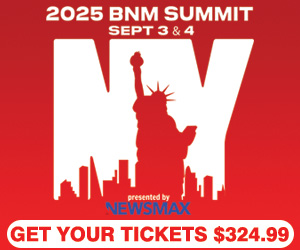“Times and conditions change so rapidly that we must keep our aim constantly focused on the future” – Walt Disney
Smith Corona was the clear leader in typewriter technology for over 100 years. Peaking at 600,000 new machines annually in 1985, Smith Corona appeared unstoppable.
Times and conditions changed around them as Apple and Microsoft flooded the market with The Personal Computer, which included a word processor.
Smith Corona’s reaction? Word processors. A dedicated digital device whose sole purpose was – typing.
Although they led the Personal Word Processor market, they failed to anticipate the speed PC’s came to market and the rapid decline in PC’s pricing.
Their next reaction? Their OWN Personal Computer called Simply Smart, Too late – Simply Smart was too far in the rear view of the market.
Leading the typewriter category for more than ten decades, their typing apparatus had become obsolete.
In July 1995, Smith Corona filed for bankruptcy protection and faded into relevance.
The calendar says September 3rd, 2024.
So why are WE operating our brands as though it’s 1994 – or even 1984?
A week back – we covered how to score your brand like Spielberg. Making a marked change to how we approach the SOUND of what comes out of the speakers.
This week, let’s challenge The Basics. The foundation of what we’ve been taught by old guys in suits (like me) for decades is obsolete.
Constant evolution – the Japanese call it – Kaizen.
Ready?
Station ID
- As talent, we are best served attempting to build a relationship with our audience. Most are still are guiding talent to OPEN and CLOSE each break with station ID. Cold and sterile.
- If you meet someone at a networking event, is your line of introduction going to open and close with your business? Simply have talent ID your brand in the natural course of an engaging conversation or story.
- ID at every opportunity. Eliminate Silent Segues. Programmers carry false hubris, assuming their audience KNOWS every station. Focus groups and perceptual studies prove the opposite. ID – often.
Slogan
- Who needs a slogan? Google, Apple, Traders Joe’s, eBay, Uber – no slogan. When you create a robust sonic product, the listener’s experience with your product develops in their mind.
- IF you have a slogan, take it out of the mouth of talent. Listen intently to how YOUR talent says your slogan. Most talent throw the slogan away like a McDonald’s wrapper – as if they are forced to say it. Because – they are.
- Slogan in your logo? It prints harder and consistent if it echoes your logo. How your logo reads – how your ID/slogan reads. Consistency equals recall.
Music
- Programmers rarely touch the recommended artist separation that music management programs come with by default. Typically, that’s 70 minutes. Five quarter hours. We know from digital measurement (Personal People Meter) that the average occasion is around 11 minutes. Customize it to each artist based on their appeal.
- When Taylor Swift was white-hot last summer, it does a format good to air a Swifty song say – every 20 minutes. Your ardent fans will reward you. Play BIG titles with great frequency. Listeners send negative feedback about songs they dislike – not their favorites.
- Play the hits. Programmers often get ‘bored’ and substitute alternate versions or live recordings of songs. If the LIVE version was the hit, then play it. Live versions that weren’t ‘the hit’ are thin, hard to consume, and harder to ‘sing-along.’
Imaging
- Your brand – in order to be memorable – needs a unique sonic stamp. As we’ve discussed – an Aural Activator. An audio logo that is unique and non-duplicable. A cue that instantly alerts the end user they KNOW it’s you. Also accomplished with distinctive voice-over actors.
- Imaging presented in a clear, concise manner hits harder. Often, Production Directors take a piece of imaging, flooding it with distortion, phasers, and vocoder effects – resulting in harder-to-hear messaging. Don’t do that.
- Imaging creators often ‘spice up’ messaging with over-the-top sound effects (guilty here – but I’ve repented). Why would we take a well-enunciated VO session and muddy it up? Sound effects are icing. The message is the cake.
Spots
- When was the last time you sat through a :60 second spot? Drug commercials are on that ‘sixty-second island’ as they require a :20 medical disclaimer. If a client’s message can’t ‘hit the hole’ in :30 seconds or under, there’s ‘too much poo in that pouch’.
- YouTube spots are rarely over :15 seconds with a bail-out at :05 seconds. Hulu – Spotify – SiriusXM. All these brands know this from research. No spots over :30 seconds. Often shorter.
- When Top 40 was in its explosive infancy, stations ran two songs – two spots. Rinse and repeat. Kids accepted it and didn’t know differently. LIVE spots littered the log. It created ‘machine-gun’ momentum. If you were to build a new audio brand, would 7-minute sets be on the ‘let’s include this’ list? Experimenting with stop-set structure and clock exposure is a good thing.
Question – with intent – everything.
Operators are shuttering licenses – simply turning them back to The FCC – in records numbers.
Evolution of any product is key to survival.
Start today.
Avoid – “Smith Coronaing”.

Kevin Robinson is a passionate award-winning programmer, consultant and coach – with multi-formats success all over the country. He has advised numerous companies including Audacy (formerly Entercom Communications), Beasley Broadcast Group, Westwood One, Midwest Communications, Townsquare Media, Midwest Family Broadcasting Group, EG Media Group, Federated Media, Kensington Media, mediaBrew Communications, Starved Rock Media, and more. He specializes in strategic radio cluster alignment, building lean-forward tactics and talent coaching – legacy and entry-level – personalities.
Known largely as a trusted talent coach, Kevin is the only personality mentor who’s coached three different morning shows on three different brands in the same major market to the #1 position. His efforts have been recognized by The World Wide Radio Summit, Radio & Records, NAB’s Marconi, and he has coached CMA, ACM and Marconi Award-winning talent. He is also in The Zionsville High School Hall of Fame as part of the 2008 inaugural class. Kevin is an Indiana native – living near Zionsville with his wife of 39 years, Monica and can be reached at kevin@robinsonmedia.fm.



